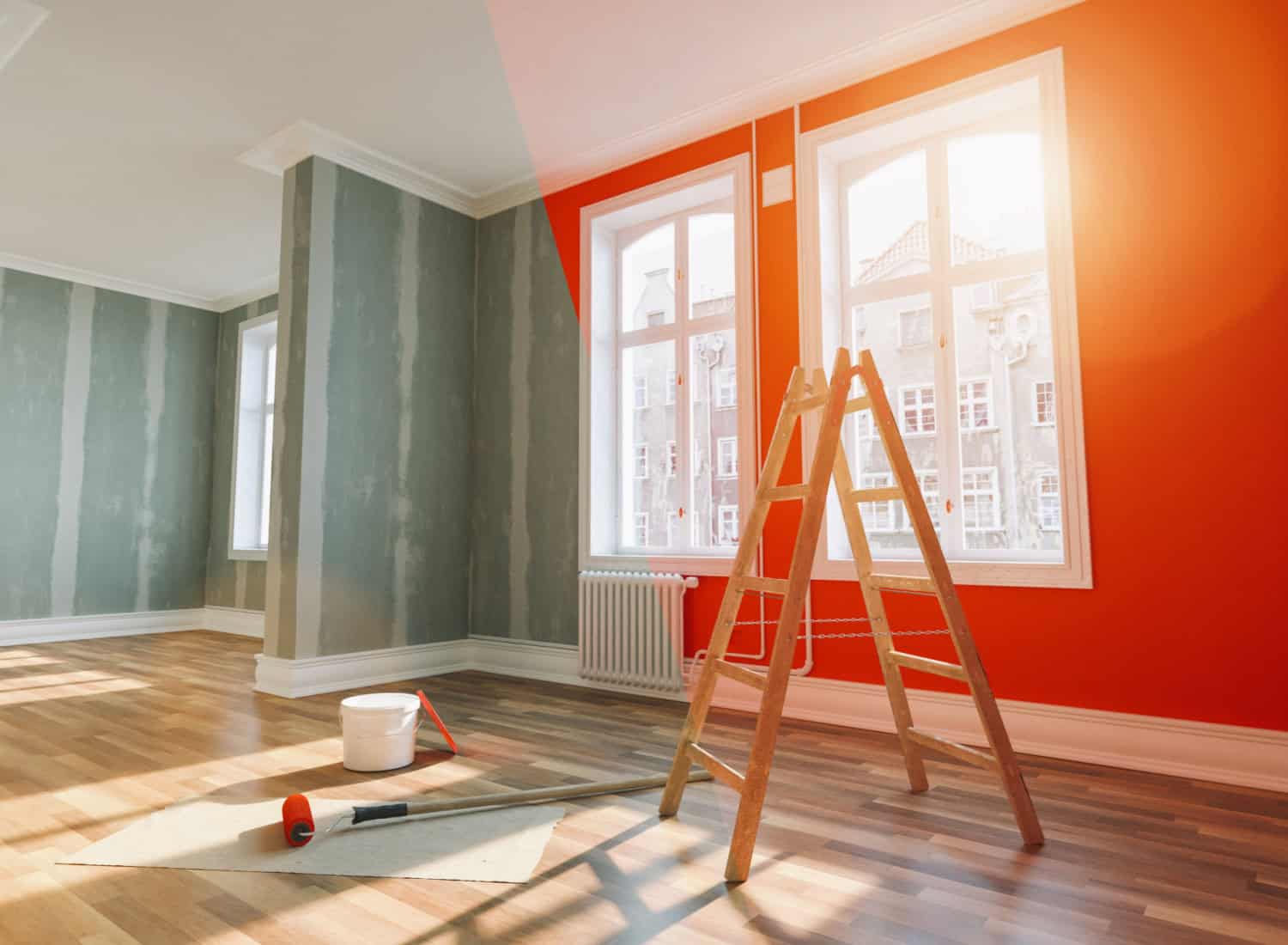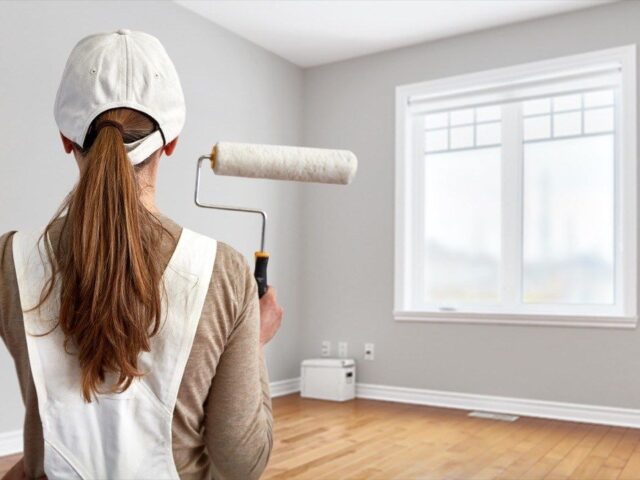Lakewood Interior Painting: Transform Your Home with Expert Painters and Services
Lakewood Interior Painting: Transform Your Home with Expert Painters and Services
Blog Article
Enhance Your Interior Decoration With Comprehensive Shade Appointment
The combination of color examination right into indoor style provides a special chance to refine and boost the psychological and aesthetic resonance of a room. By involving with an experienced shade consultant, you can navigate the complexities of shade choice, making sure that your options not only complement architectural attributes yet likewise resonate with individual style and emotional influence.
Benefits of Color Appointment

Moreover, color examination help in maximizing natural light and enhancing spatial assumption. Lighter hues can make a room appear more extensive, while darker tones develop an intimate setting. Cleveland Metro Painting Specialists. This tactical application of color can dramatically influence the overall ambiance of any kind of interior space
Additionally, professional consultants possess an extensive understanding of ageless classics and present patterns, guaranteeing that the selected shades will remain appealing over time. This insight can conserve clients from expensive redesigns in the future. Finally, shade assessment encourages clients by giving them with a clear vision and instructions, cultivating self-confidence in their style options and eventually resulting in a more enjoyable and successful interior decoration result.
Comprehending Color Psychology
The importance of shade psychology in interior decoration can not be overstated, as it looks into the psychological and emotional effects that numerous tones can stimulate in people. Colors can influence state of mind, behavior, and also efficiency, making them a critical factor to consider in any kind of style job.
For example, cozy colors such as red, orange, and yellow are frequently connected with power and heat. They can boost feelings of exhilaration and convenience, making them ideal for social spaces like living cooking areas or areas. Conversely, amazing shades like blue, green, and purple often tend to evoke calmness and harmony, making them optimal for rooms or reflection areas.
Furthermore, the use of neutral tones can create a well balanced atmosphere by allowing the bolder colors to attract attention without overwhelming the senses. Comprehending these emotional effects enables designers to create rooms that not only look cosmetically pleasing but likewise advertise psychological health.
Including color psychology right into interior design includes a thoughtful choice of tones tailored to the desired feature of each room, ultimately improving the general experience for its owners. This recognition is vital for attaining a functional and unified indoor setting.
The Shade Wheel Explained
Comprehending the connections in between colors is crucial for reliable indoor layout, and the shade wheel offers as a valuable device in this procedure. The shade wheel, created by Isaac Newton in the 17th century, highlights the range of shades prepared in a round layout. It comprises key colors-- red, blue, and yellow-- that can not be produced by mixing various other colors. Second shades, created by combining primary shades, consist of green, orange, and purple. Tertiary shades result from mixing a key and a secondary color, bring about tones such as blue and red-orange.
The shade wheel aids developers realize the partnerships in between colors, including corresponding, similar, and triadic systems. Complementary colors, positioned opposite each other on the wheel, create vibrant contrasts that can energize a space. Comparable shades, situated alongside each other, provide a cohesive and harmonious look. Triadic systems use three uniformly spaced shades, supplying equilibrium and visual rate of interest.
Using the shade wheel in indoor design not just improves visual appeal but also stimulates specific feelings and ambiences, making it an essential referral for color appointment. Comprehending these partnerships ultimately equips developers to create areas that are both aesthetically captivating and practical.
Picking the Right Palette
Commonly, picking the right combination is a definitive variable in achieving a successful interior style task. A well-chosen color pattern can link a space, improve its attributes, and stimulate wanted emotions. To start, think about the function of the room. Different rooms serve diverse features and call for combinations that reflect their designated use; for example, tranquil shades such as soft blues or greens function well in rooms, promoting relaxation.
Light can substantially change how shades show up, so it is important to assess the area at different times of the day. An unified combination should enhance these features, developing a cohesive appearance throughout the area.
When picking colors, make use of the 60-30-10 policy, which suggests that 60% of the area should be a leading color, 30% a second color, and 10% an accent shade. This proportion makes sure balance and aesthetic rate of interest (Cleveland Metro Painting Specialists). Sample shades on the wall surfaces before committing, as this allows you to see how the my response hues communicate with one another and the overall atmosphere they develop in your interior layout project.
Dealing With a Shade Consultant

When dealing with a color professional, the process usually starts with a preliminary consultation. Throughout this meeting, you'll discuss your vision, choices, and the existing elements in your area. The professional will evaluate your needs and may advise particular shade palettes that straighten with your objectives.
After developing an instructions, the expert will provide samples and aesthetic help to assist you visualize the proposed color design. This action is crucial, as shades can show up in different ways under varying lighting conditions.
In addition, a shade specialist can direct you in selecting complementary furnishings, art work, and devices to balance with your chosen palette. By teaming up carefully, you can accomplish a refined visual that boosts your interiors and creates an inviting atmosphere. Ultimately, the proficiency of a color specialist can substantially improve the general impact of your design task.
Conclusion
In summary, comprehensive color examination acts as a crucial device for boosting indoor layout. By leveraging expert knowledge of shade psychology and spatial characteristics, a customized shade scheme can be established to evoke specific emotions and create an unified atmosphere. This strategic approach not only promotes a natural design story yet additionally minimizes the risk of costly redesigns. Ultimately, involving with a shade professional guarantees an informed and aesthetically pleasing end result, elevating the overall experience of the space.
By engaging with an experienced shade specialist, you can navigate the intricacies of color choice, ensuring over here that your selections not only complement building attributes yet also resonate with personal style and mental influence. It comprises main shades-- red, blue, and yellow-- that can not be developed by blending other shades.The shade wheel assists designers comprehend the connections in between shades, consisting of complementary, comparable, and special info triadic plans.When selecting shades, utilize the 60-30-10 policy, which recommends that 60% of the area ought to be a dominant color, 30% a secondary shade, and 10% an accent color. By leveraging professional understanding of shade psychology and spatial dynamics, a customized color scheme can be created to evoke certain feelings and develop a harmonious atmosphere.
Report this page